Gregory Wilkins is a self-taught artist. He grew up in a multi-ethnic, multi-national family and always felt ‘different’ throughout his childhood. His mother encouraged him to express himself and he started to explore creativity through performance and art. He travelled the world, immersing himself in different cultures and supporting causes fighting for equality.
These experiences have driven his life of creativity and form the foundation of his artworks. Greg’s work on paper and canvas uses reconstruction and collage, paint, photography, stitch and beadwork to represent the layers and complexities of life and explore the meaning of existence.
In 2016 and 2019 Greg received Professional Mid-Career Artist Grants from Prairie Lakes Regional Arts Council. He was awarded an Artists on Main Street grant (via the Preservation Alliance of Minnesota) and a Prairie Lakes Regional Arts Council Small Arts Project Grant in 2018. He has won numerous awards including best in show at the ‘410 Project’ juried exhibitions in 2018 and 2017 (Mankato, Minnesota), the Ringholz Foundation Art Prize in 2018 and first place in the Arts Center of St. Peter juried exhibition, Minnesota, in 2017. His work is held in private collections in Minnesota, California, Florida, Idaho, and Washington, DC.
In this interview, Greg shares how he struggled to fit in as a child and how he gradually learned to embrace his feeling of uniqueness, feeding his passion for creativity with his art. Discover how his career developed and how issues of global community and social inequality inspire his work. Find out how he creates his layered works in a mindful and organic way to satisfy his need to express himself. “For me, art is not a choice. It is a necessity.”
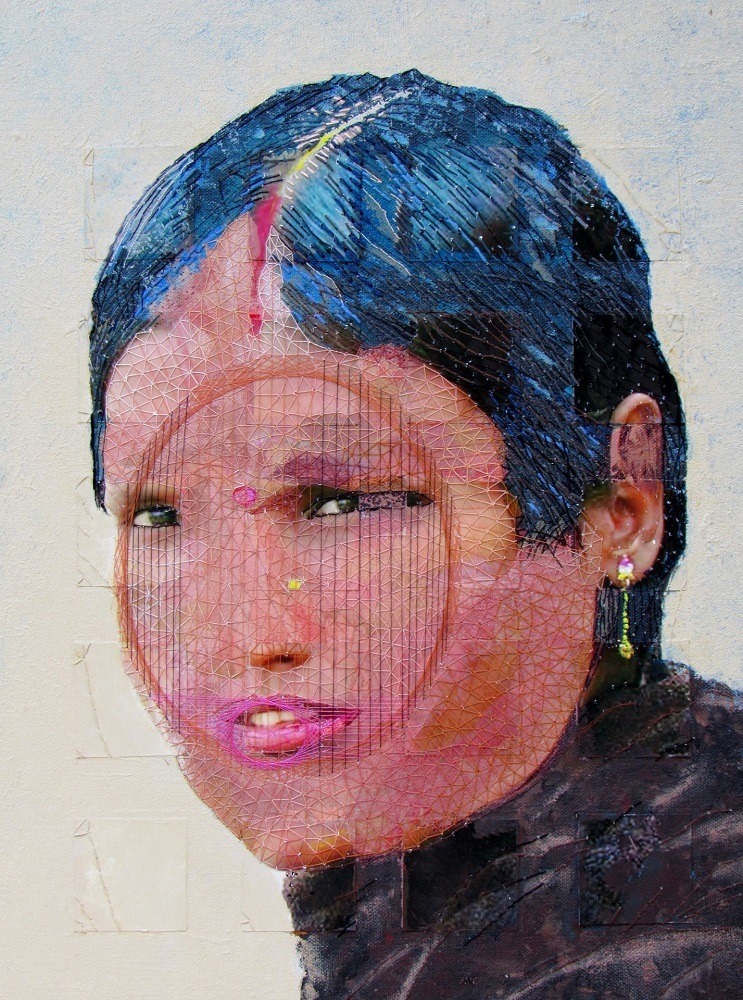
Express yourself
TextileArtist.org: What initially attracted you to textiles as a medium? How was your imagination captured?
Gregory Wilkins: When I was a boy, my mother sewed, crocheted and crafted. We had heaps of fabric, yarn, thread, and patterns stacked everywhere. The cornucopia of colours and textures changed with the seasons as she made us Christmas and Easter outfits, school clothes and holiday decorations for our home.
I am one of seven children and she made all of our Hallowe’en costumes. She would work into the night to creating a menagerie of animal costumes; a lion with a full mane, a rabbit with pompom tail and an oversized stuffed carrot, clowns or a witch with black flowing gown and a giant, pointed hat. Every year something spectacular would be created.
As we grew older we began to craft our own creations. One of my favourite costumes was a sailor paddling a canoe. I created a sailor suit on top with the ocean below. Sewn felt seaweed and fabric sea creatures were glued onto corduroy trousers, with a boat form made of chicken wire with hand painted fabric sewn and wrapped around the frame. I was a sight to behold!
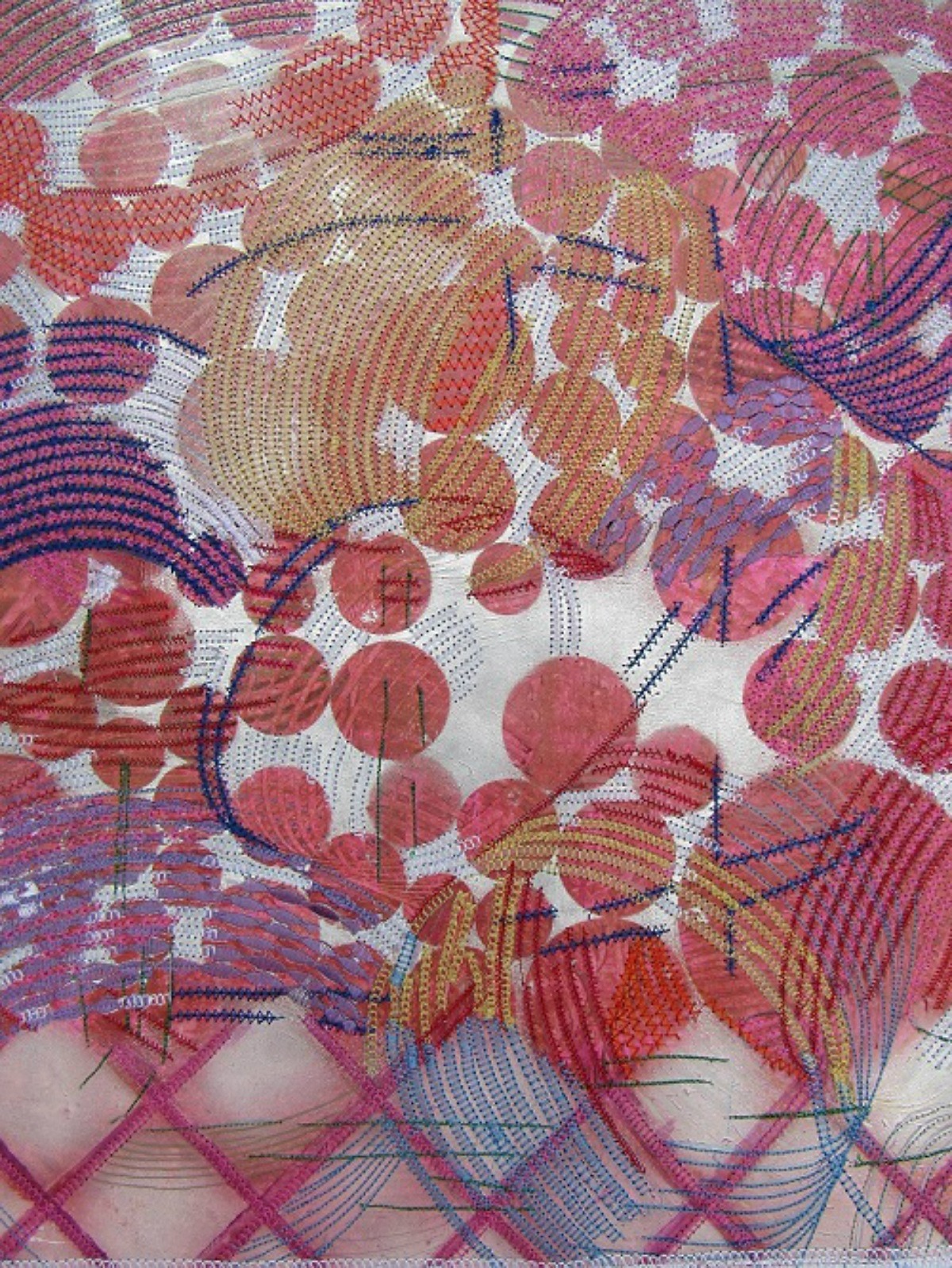
What or who were your early influences and how has your life/upbringing influenced your work?
I grew up in a multi-national and multi-lingual home, so I felt different from most; an outsider. My local community did not understand my global perspective, what it meant to be a queer kid and my love of all things different.
But this empowered me to be an advocate for change.
Rather than allowing others to stunt my passion I expressed myself, my authentic, peculiar and unique self, through my art.
I first got actively involved in art when I was nine years old. I was an actor at Bay Street Players at the State Theatre in Eustis, Florida. As a performer, I learned the value of collaboration, taking risks and learning by doing.
I learnt a lot. There was more to theatre than being on stage; set and costume design, lighting, fundraising and audience development. I got involved in the Young Peoples Theatre. We built scenery, created and developed scripts, made masks and costumes and learned about the history of theatre. It made a big impact as I found a group of people that embraced difference as something special, rather than casting it out.
I had found somewhere that accepted me and allowed me to grow.
My mother taught me to crochet when I was eight years old. I was not very good, but she encouraged me to keep trying. A year later I took what I learned from crocheting to my school class and shared it with my peers. It was frowned upon by my teachers because it was something they felt boys “should not do”.
Later that year, I performed in drag version of “Somewhere Over the Rainbow” from the Wizard of Oz. I was in the show at Bay Street Players and was excited to share it with my school classmates. But this led to problems. I began to get picked on, bullied and beaten up.
But my mother supported me. She said, “God does not make junk”. She explained that I was special, even though people did not see it. That I should not hide the person I was.
Art, both visual and performance, became a way to express myself. I was free to be, do or wear anything. Life was about living and living fully, to be full of passion and be mindful, not mindless.
I tried many things; needlepoint, cross-stitch, painting, clay and woodwork, storytelling and drag.
For me, creativity was about exploration. Learning by doing. Today I am a self-taught artist. I take risks, make mistakes, then grow wiser from the experience.
For example, I’d never used a sewing machine until 2017. I was struggling with how I was going to complete enough work for my first solo exhibition at the Arts Center of St. Peter, Minnesota. So I watched a YouTube video on how to thread the machine. I became fully engaged.
I found that learning by doing informs and shapes new directions and outcomes.
The urge to create comes from within. As an artist, I try to find meaning in this hurried, nonsensical world. Few find the time to contemplate, reflect, and renew.
Art for me embraces chaos and brings resolution. I try to give the viewer an opportunity to explore existence. For me, art is not a choice; it is a necessity.
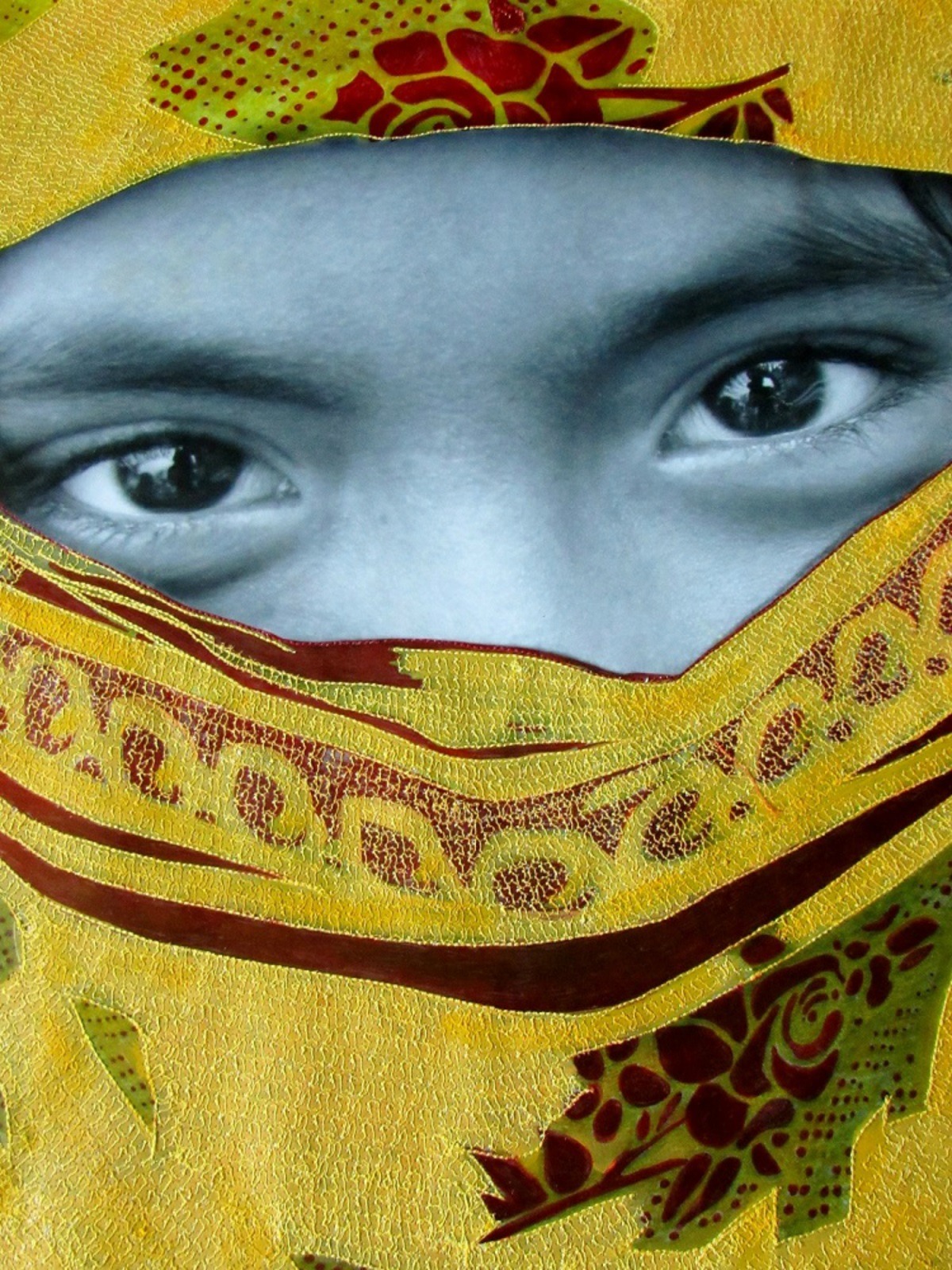
What was your route to becoming an artist?
I am self-taught and like to learn continuously. As part of my education, I have visited many galleries and museums, explored UNESCO sites and visit and volunteered with artists and arts organizations around the globe.
When I was an undergraduate (1985-90) at Warren Wilson College, North Carolina, I wrote down all the things I might want to do with my life. I also developed a personal statement, “Creating a life of change, impacting the lives of one or many”. Combined, my goals and vision statement have taken me on a grand adventure.
One goal had great importance to me. I wanted to travel. For me, travel was not just about visiting. It was about living there, meeting people and experiencing the culture. My art is a reflection of those experiences.
Global travel directly impacts my art. It resonates through colour, texture, images, and titles. I am inspired by life stories, community celebrations, the depths of a cave system, the powerful energy of a rainforest, or the vastness of a desert.
I completed my undergraduate degree (1990) in Intercultural Studies, History and Political science. I also worked at the Smithsonian Institution at the American Art Museum in Washington, DC, the Shakespeare Theatre and The Lansburgh. In addition, I volunteered with the Whitman Walker Clinic caring for people with AIDS and worked with the Human Rights Campaign. While in Washington, DC, I attended anti-war protest marches. I took part in demonstrations to bring awareness to the HIV/AIDS crisis and LGBTQ social issues, such as equality in housing, healthcare and the ability to serve openly in the military.
These experiences were powerful because I was able to discover my voice. I began using these experiences to influence my art.
For the next few years, I prioritized my graduate and doctoral studies in Ohio and Florida, receiving a graduate degree in Educational Leadership in 2001. In 2002 I returned to Washington DC. I worked as a figure model for artists at The Foundry in Georgetown and the Washington Drawing Center (formerly the Dupont Drawing Group). I also began to privately model for Bob Worthy for his “Fallen Warrior” series.
After spending time in Idaho I moved on to Minnesota. In 2009, I saw a volunteer opportunity for the Prairie Lakes Regional Arts Council, to help distribute art grant funding. I served six years (2010-16) on the executive board as secretary, vice president and two years as president. While on the arts board, I reviewed hundreds of grants, attended many art openings, music events, and cultural celebrations. I was motivated to reboot my art practice.
I returned to one of my pieces “Idaho Snake River Wheat”, which at that time had no wheat in it. I began stitching wheat shafts into the canvas. I discovered a new technique in my art.
In the winter of 2012, I spent two months in India. I visited workshops and factories. India has vast sweatshops supplying the world’s fast fashion. I was moved by the people and stories of their hardship. Sewing is historically considered “women’s work” and the women work six or seven days a week, but bring home very little income.
I wondered if there was something I could with my art to bring awareness to their plight.
I wanted to reconnect with the experiences from my trip. I entered a photograph into a juried exhibition and it wasn’t selected. I returned home and cut the piece up. No sooner had I done that I regretted it. I put it back together by adhering it to a canvas as a collage and began painting into it as well as sewing directly into the canvas, blending the photograph, paint, and thread. This was when I first began to develop my artistic style, using photographs and embroidery in my art.
In 2016, I was awarded a four-month sabbatical. I left the United States to visit educational institutions around the world, attend cultural events and work with communities in Australia, New Zealand, Singapore, Malaysia, Borneo and Bangladesh. The sabbatical energized me.
I was about to turn fifty and had set myself a goal of having a solo exhibition. I applied for a grant and was awarded $3,000. The show was daunting because the gallery space was vast and would need at least sixty pieces.
Rather than hand-stitching all of my mixed media paintings on canvas and paper, I pulled out my trusty sewing machine. I created over a hundred pieces in eighteen months to fill the gallery. I developed a black and white photograph installation, showcasing indigenous people I’d met along my travels.
The show was called, “Lives Unfurled: Chaos to Simplicity” and received rave reviews.
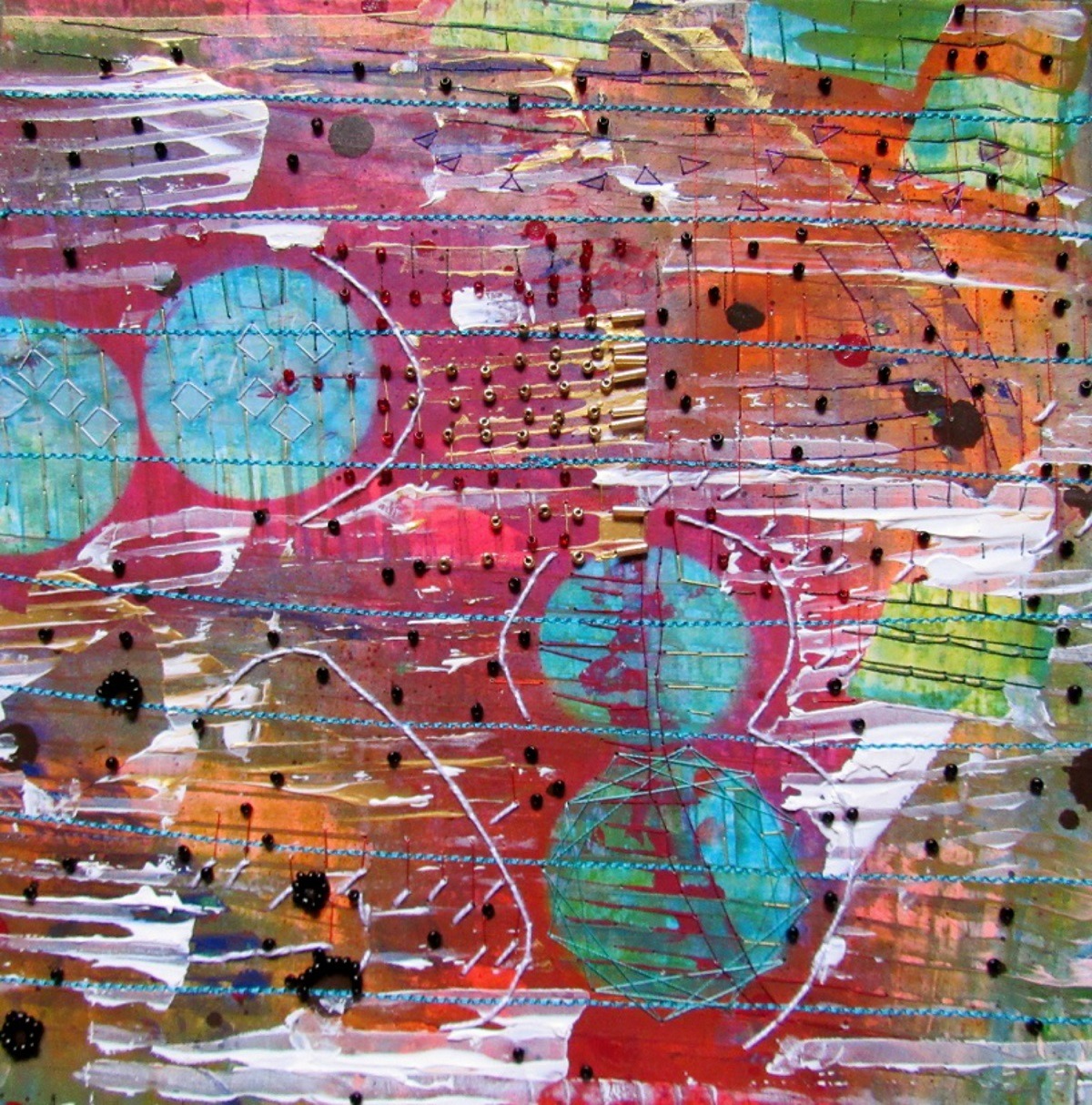
Layers of memories
Tell us about your process from conception to creation
When I travel, I take many photographs and write a travel blog. When I get back home I review my images and re-read my thoughts about the people I met, their stories, celebrations and rituals.
This period of reflection informs my art.
I see pattern in a dress, ripples on the surface of water or an ornate architectural element. I try to express my experiences through my art, using paper, canvas, and fabric.
I currently work full-time at Minnesota State Mankato. When I am not working I delve into my creative practice. I try to do something artful every day, whether creating, researching or experimenting.
My creative space was in my apartment up until February 2019, when I moved into my first studio. In warmer weather, I work outside in a forested area. I have a temporary studio between fallen trees and mud puddles and work while batting away the mosquitoes! My easel is made from fallen tree trunks lashed to living trees and I use a tree stump as a table. In this outdoor studio, I put paint to canvas and paper. In the winter months, I bring my art indoors but focus on needlework and beading.
I do not begin with an end in mind. I don’t use a sketchbook. I refer to my collected photographs, travel blog and my memories.
I also let my emotional self shape my work. I cannot rush the work. It requires patience and reflection.
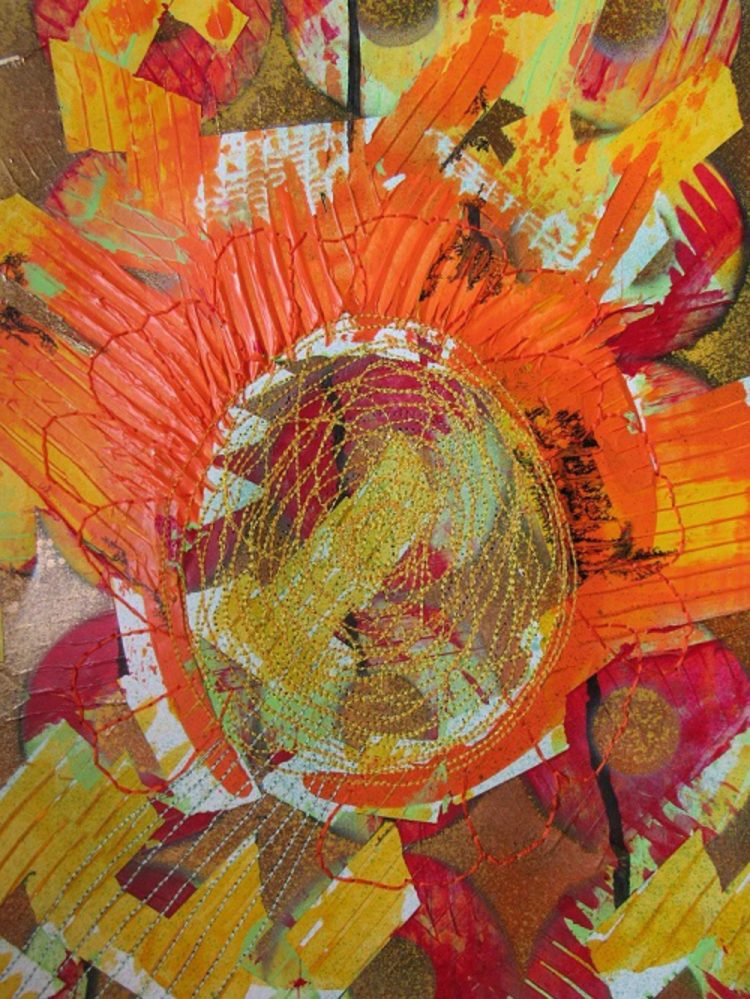
Tell us a bit about your chosen techniques and how you use them
There is a lot of responsibility starting with a clean fresh canvas or paper. I start by trying to destroy the sense of pureness. This might be done by crinkling it up, throwing dirt on the surface and pressing it in, pouring something onto it or throwing paint across the surface. I make gestural marks with a marker or graphite or use spray paint to alter the surface. Something always emerges from this process.
I step back to look at the markings and texture that is emerging from the work.
I tape out elements that give me joy so that I may return to them later, and I then add more paint to the surface. I repeat the process until the surface is covered with blue tape and paint. This can take days or weeks. I usually work on six to eight pieces at one time.
When I am ready, I peel away the tape and reveal the many layers beneath. Stepping away again, I see the many marks I have made. If the many elements make sense to me, I set the image aside for a later time. If the elements of the piece do not talk to each other, I go back and add another image on top of the paper to create clarity in the work.
I use the lines and structure to inform me where I am going to sew, either by hand or machine. I build layer upon layer until I feel it is complete.
I use the same process with my photography. I take an image that I like and paint and sew directly on the image. Or I cut it up and put it back together. This takes time and patience because the paper may tear and the damage has to be incorporated into the work.
I also experiment. I make marks on paper or canvas. Then I cut the piece into long strips and weave it back together. The image is transformed into something new. I sew into the piece by hand and machine, add glass beads, more paint and other elements until the work is complete.
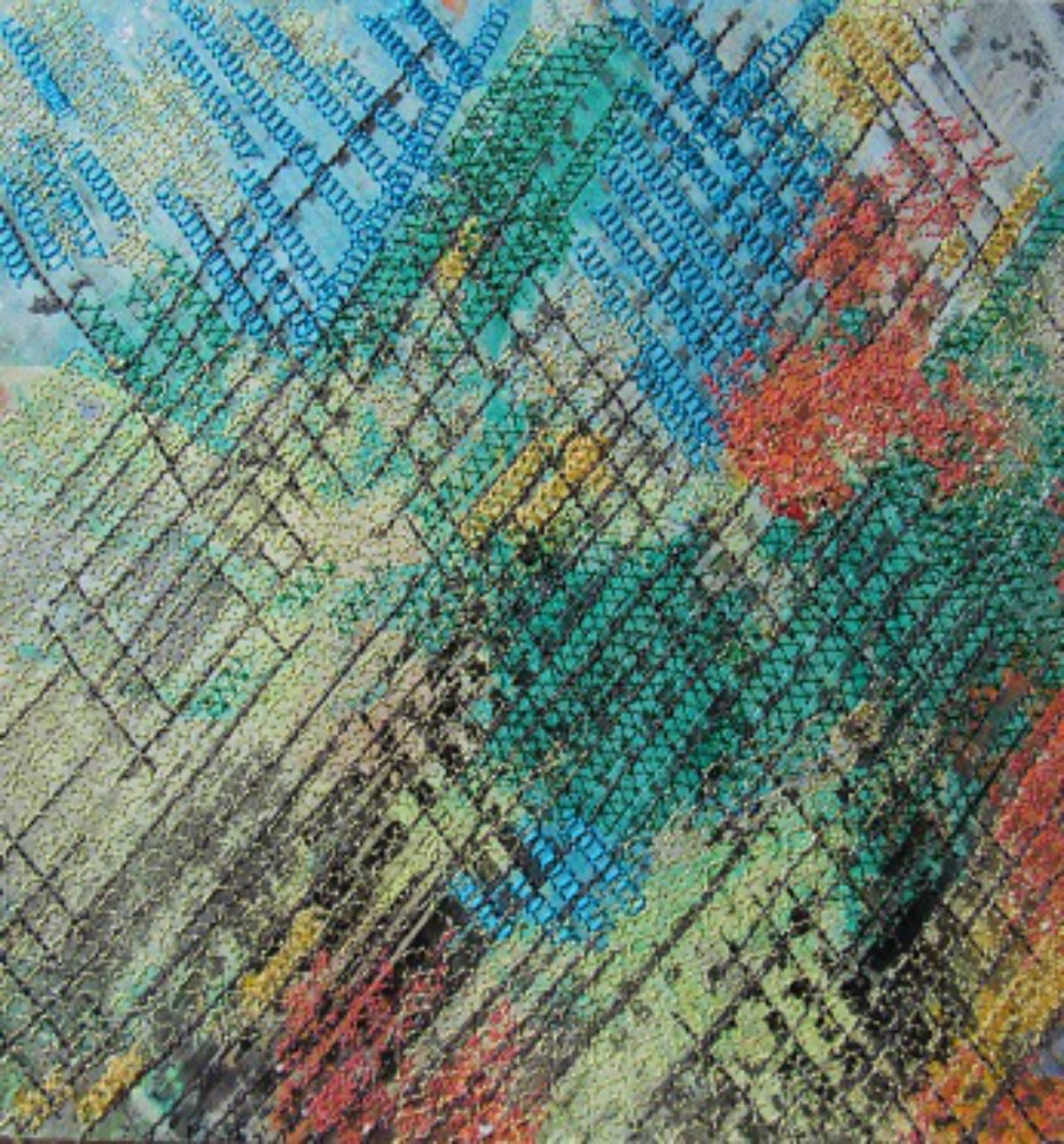
What currently inspires you?
Texture inspires me. Anything that encourages the viewer to step up close and investigate.
I am intrigued by lived experiences that are vastly different from my own, by men with unwieldy beards and moustaches, by women, their wisdom and strength.
I am inspired by the environment, by architecture that pushes structural elements and creates gathering places for silence and contemplation.
I am driven by the possibility of a global community transcending the conflict of nation states.
I am inspired by the question of existence and current political events, from a president who is careless and vulgar, to the ordinary men and women who want to build a better planet for future generations.
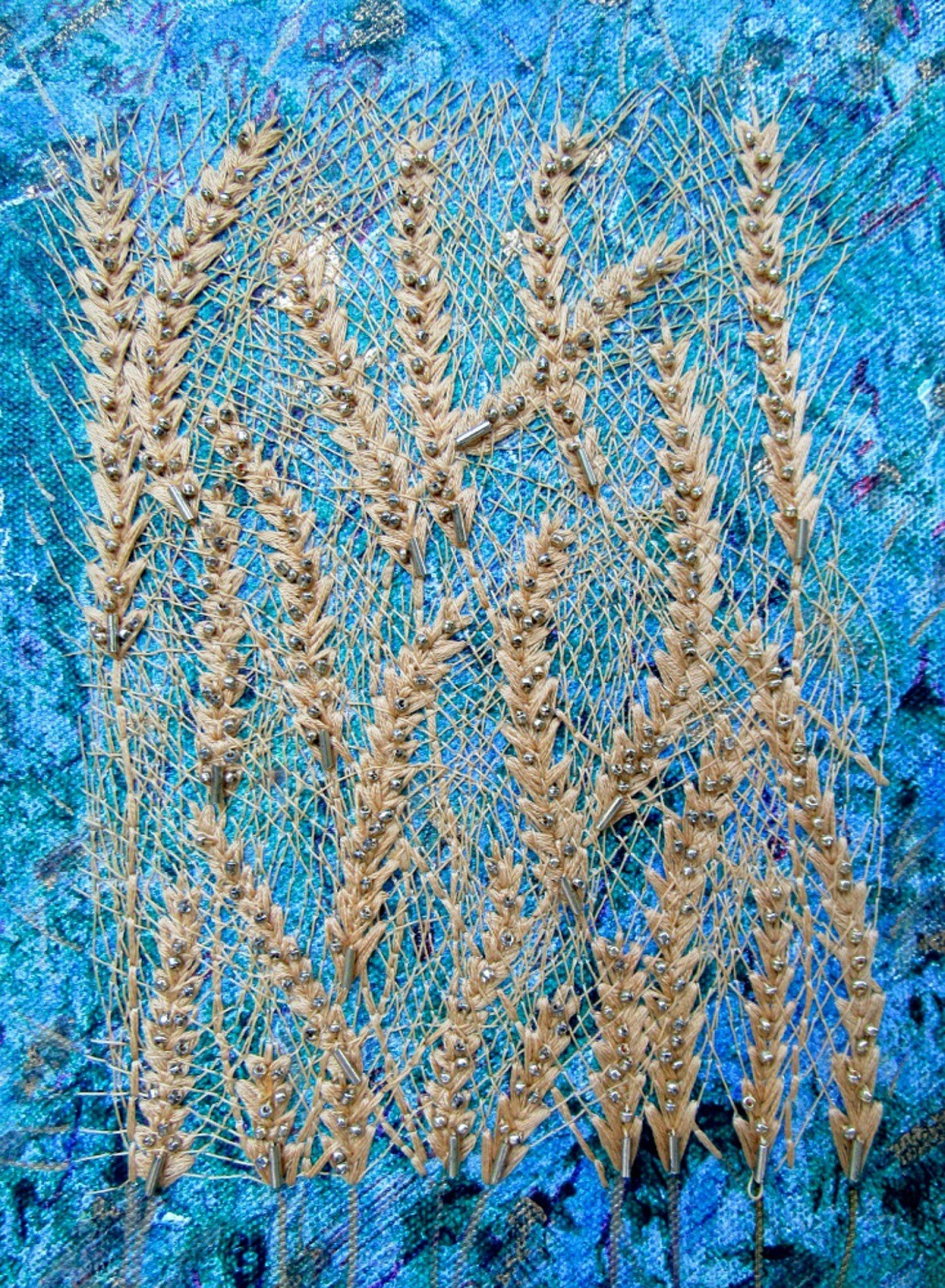
From places to textured faces
Tell us about a piece of your work that holds particularly fond memories and why?
In 2008, my work contract at Washington State University in Pullman was not renewed.
I moved to my partner’s farm in Idaho. I had fallen deeply in love with my partner Scott Clyde. Despite where my heart was, I made the difficult decision in 2009 to leave him behind and return to Miami, Florida (where I owned a house) to find work. To stay connected in spirit, I began working on a piece called ‘Idaho, Snake River Wheat’.
It was a painting on canvas of my reflections of the Snake River, the largest North American waterway. When I had completed it, I felt like it was missing something; a “soul”. The season was autumn, a time to harvest wheat.
The Clyde Farm was established in 1877 and raises 2,300 acres of wheat. I began sewing in wheat shafts to the painting. It was a long and arduous process.
This piece changed the direction of my art, while I rediscovered my heart.
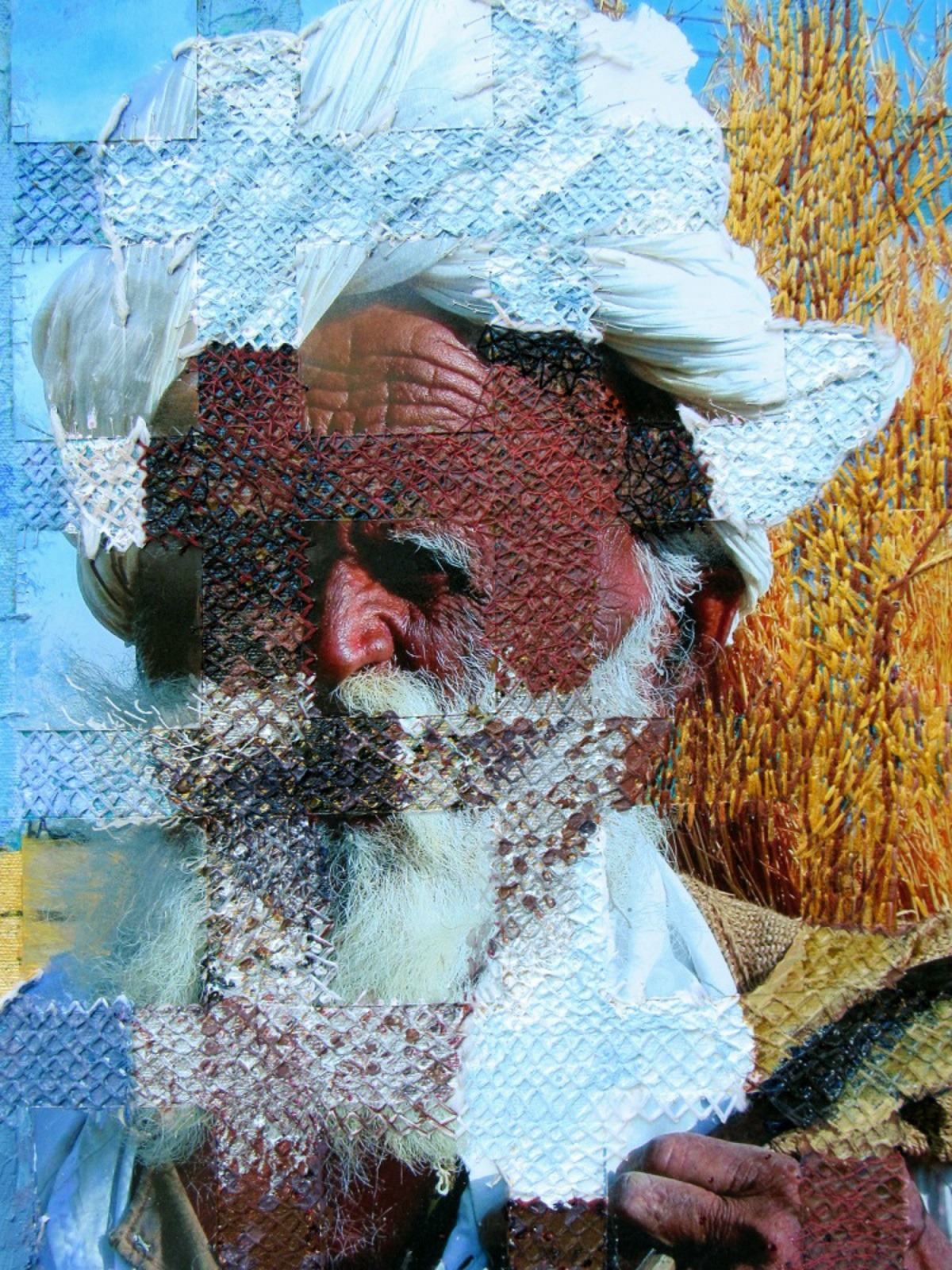
How has your work developed since you began and how do you see it evolving in the future?
I have always been intrigued by UNESCO sites and particularly by ancient architecture.
In Varanasi, India at the holy Ganges River I admired the majestic temples but also fell in love with faces. I was drawn to textured features like beards, moustaches and intense smile lines. A face full of wrinkles that reflected a life full of hope and hardship.
Since that time, my photography has journeyed from places to faces.
In the past, my art was abstract and thinly applied. Now, I am moving more toward portraiture and landscape, though not in a traditional sense. My pieces have become more involved with texture, beads, thread of varying styles, yarn and recycled fabric. I want to begin exploring found objects and “weaving” them into canvas and paper.
Today, I am more patient with my outcome than when I first began. I understand my limitations and find solutions with the tools and resources I have at my disposal.
I am also more at peace. I can set an artwork aside and wait for a time that it will speak to me. The ‘now’ is not critical. I am okay with finishing it later.
In 2018, I was involved in a severe automobile accident. Another car collided with mine, causing it to spin out of control and crash into another vehicle. The paramedics had to cut me out of my car. I was rushed to the hospital with lacerations to my face, concussion and a collapsed lung. I lost the use of my legs and left side of my body and my sternum was broken in eight places. I was unable to work for many weeks and was in severe pain. I am recovered but still suffer from back and neck pain, headaches and PTSD flashbacks.
But my art has evolved with my recovery. I have learned to take rest breaks and live within my physical limitations.
I have also gained confidence with my art. I am applying to galleries and exhibition spaces so my art can be seen and enjoyed by others. I currently have seven solo exhibitions scheduled through to 2020, as well as numerous group shows.
Life is short. Live large!
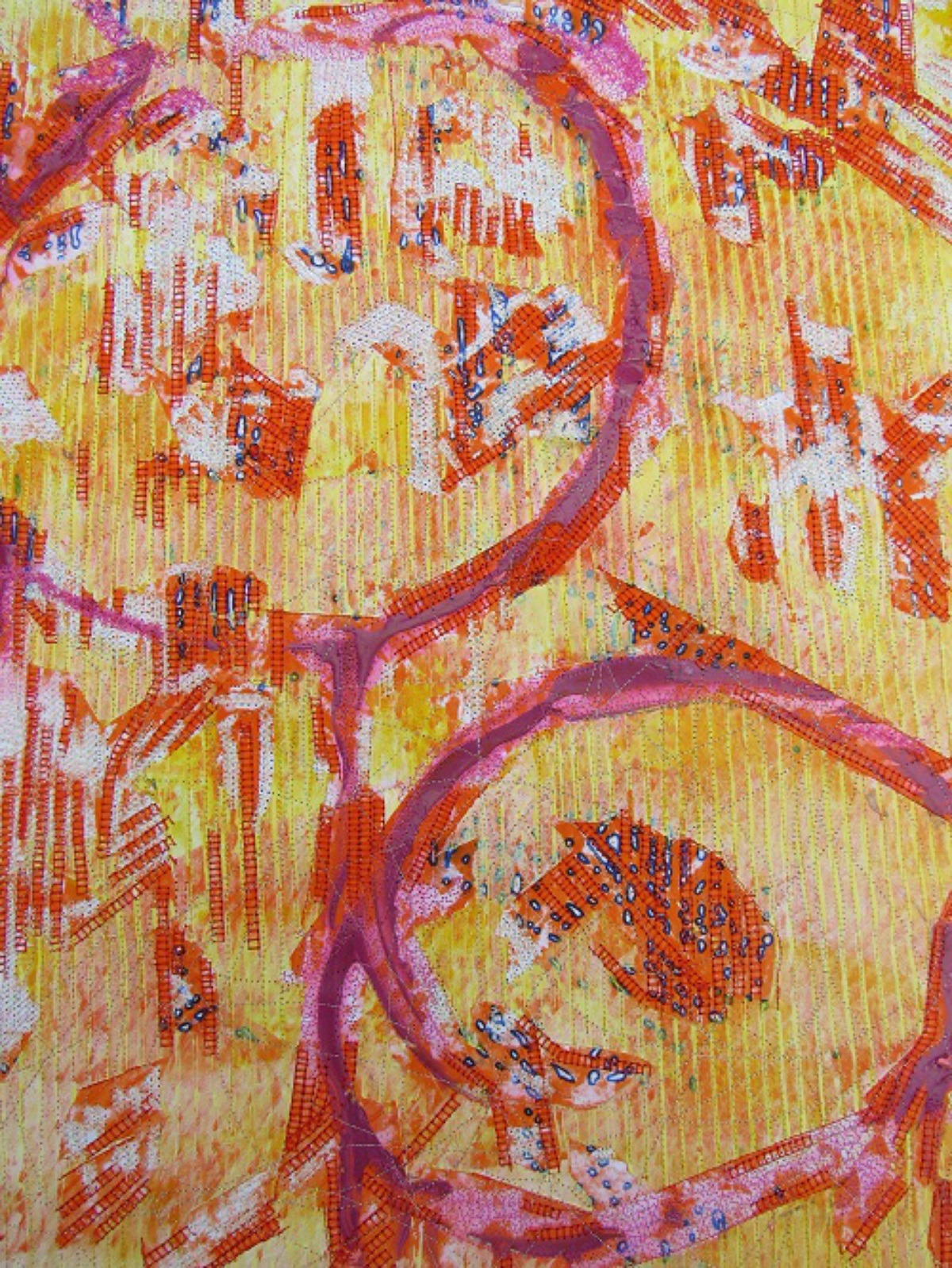
What advice would you give to an aspiring textile artist?
Be fabulous! Don’t listen to the naysayers; they are a dime a dozen.
Make mistakes and take risks. They are an excellent opportunity to enlighten your process and inform your practice.
Be true to yourself. Follow your instinct.
Read, travel, visit museums, galleries and craft fairs, talk with seasoned professionals. Soak it up like a sponge!
Act on your vision. Push boundaries. Let your imagination go wild. Sometimes let the process lead you forward without a final end product in mind.
Minutes matter and moments count. Find the time to do what you love.
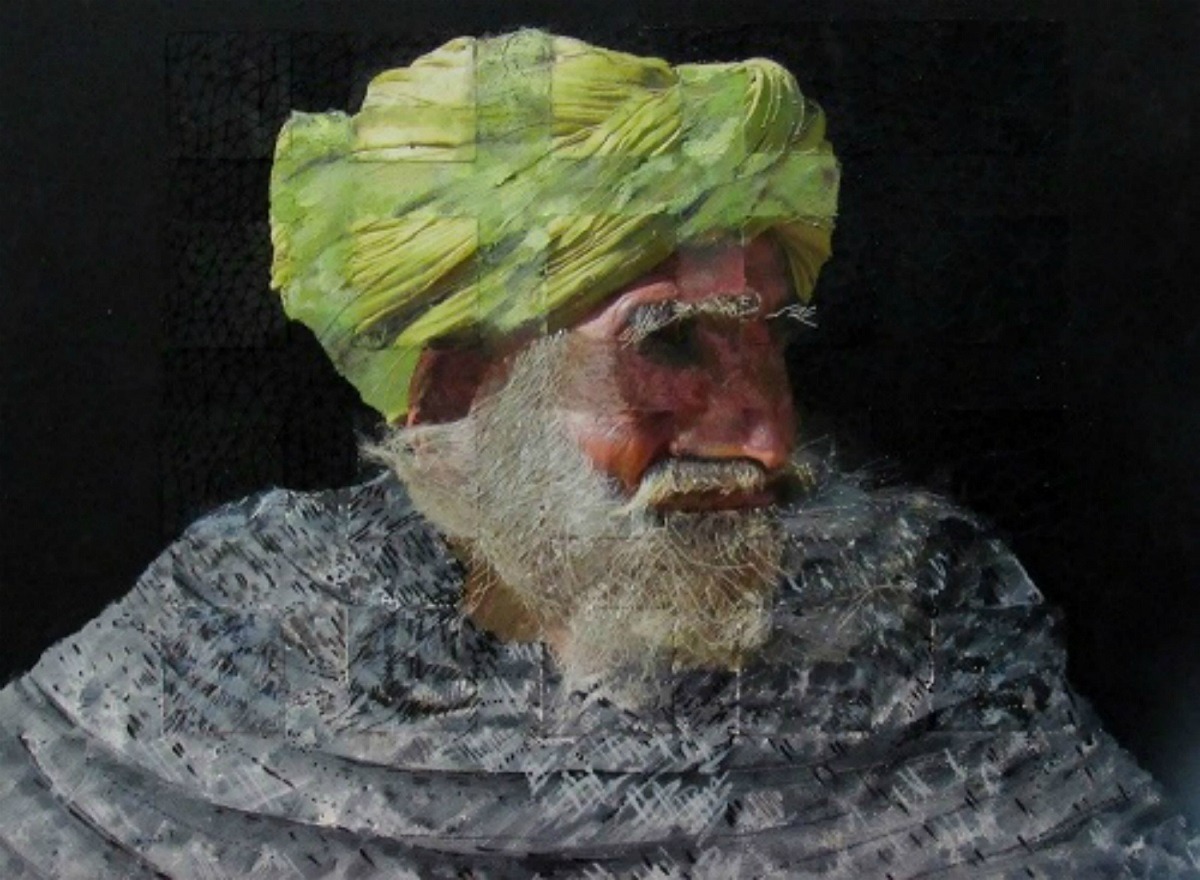
For more information visit Gregory’s Website
How did Greg’s inspiring journey to becoming an artist affect you? Let us know in the comments below
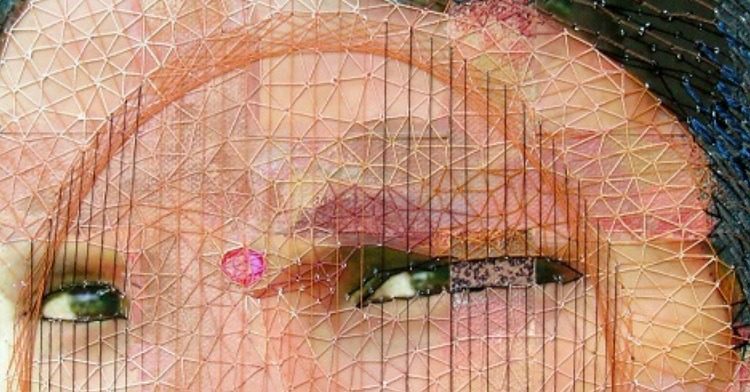

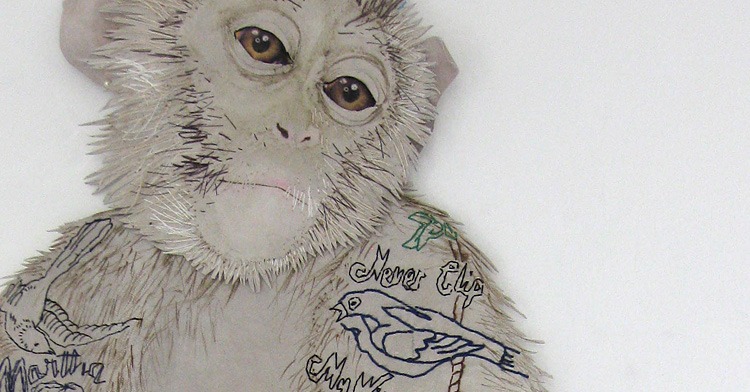
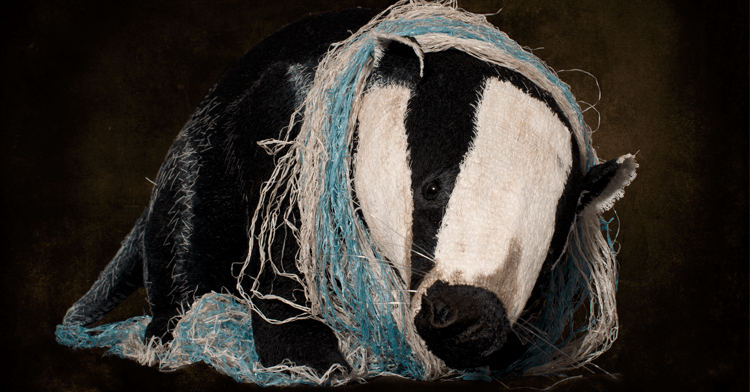
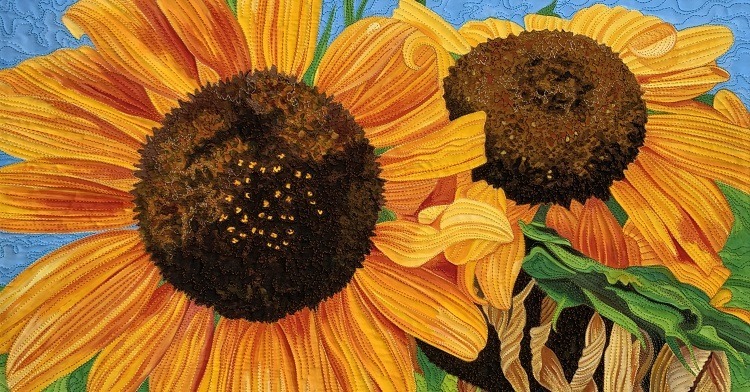
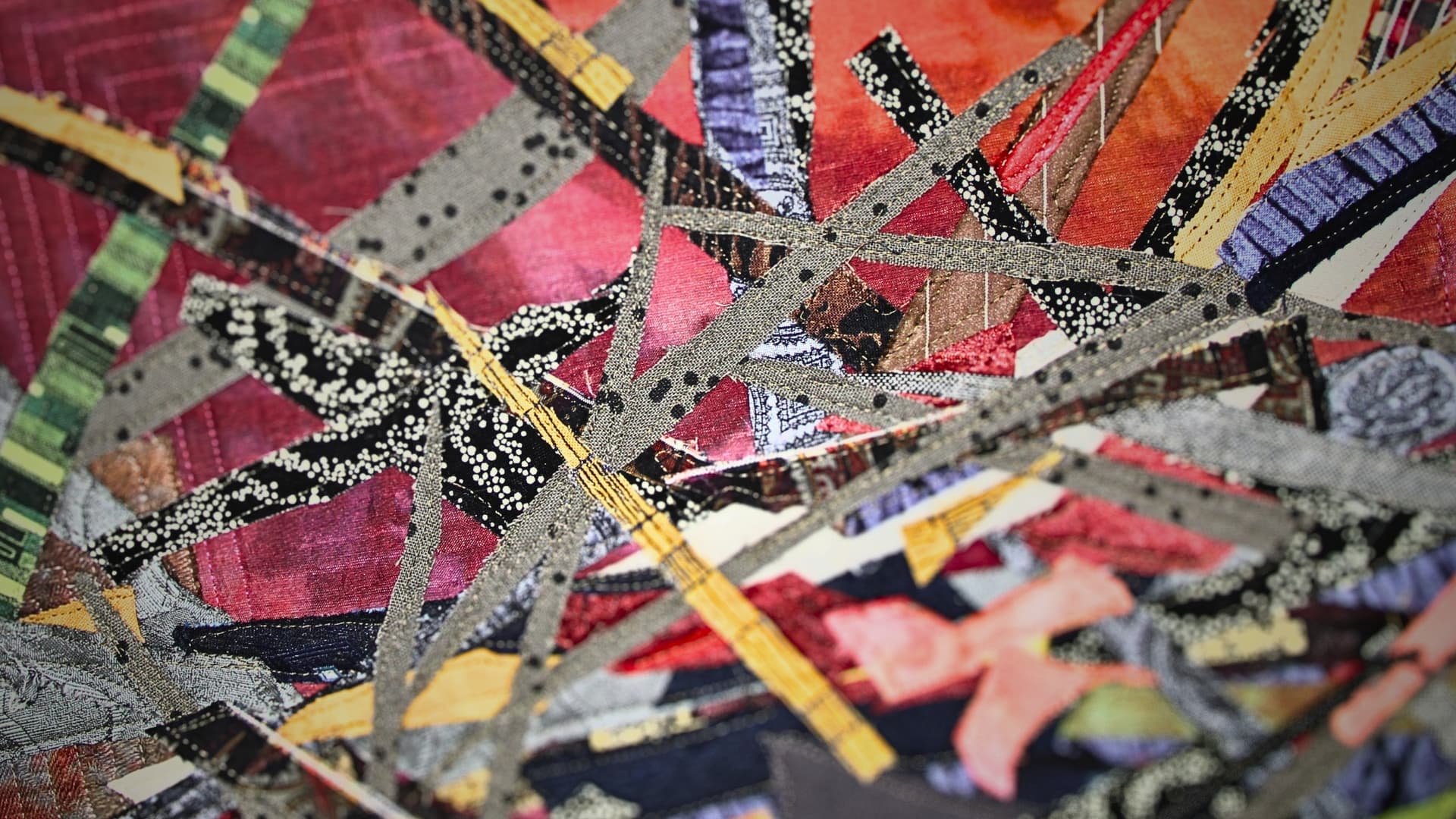
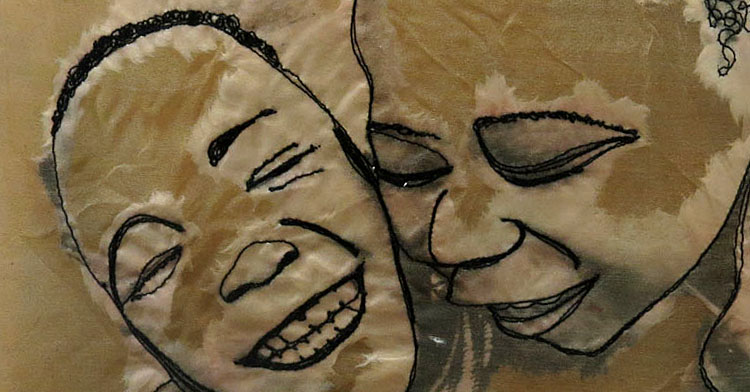
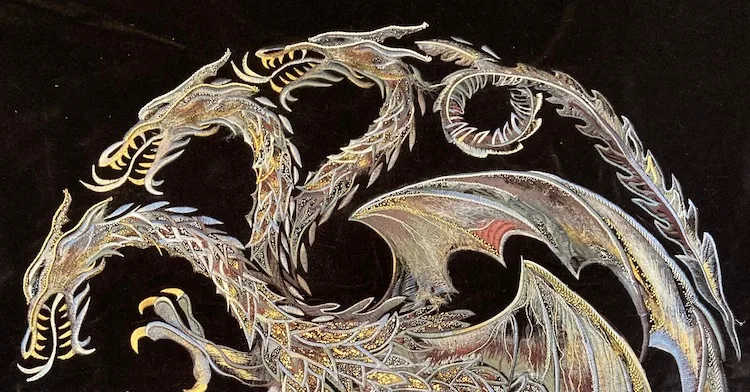
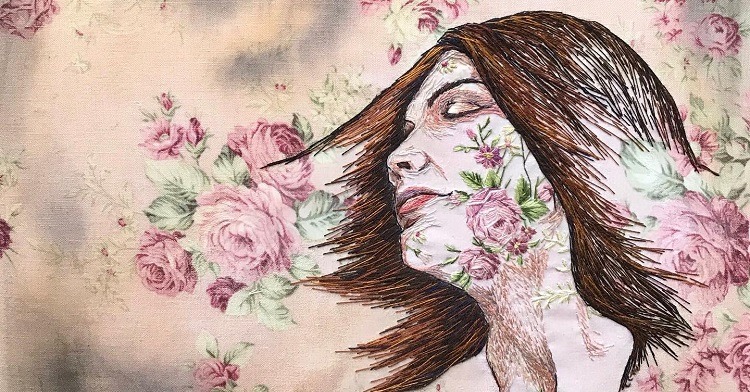
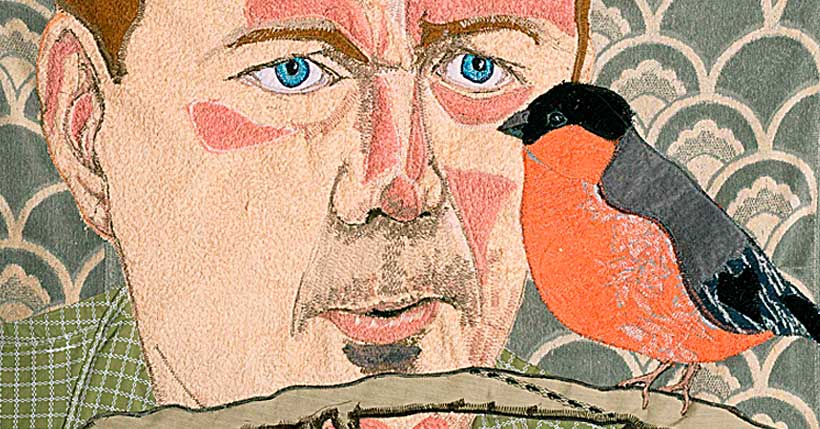
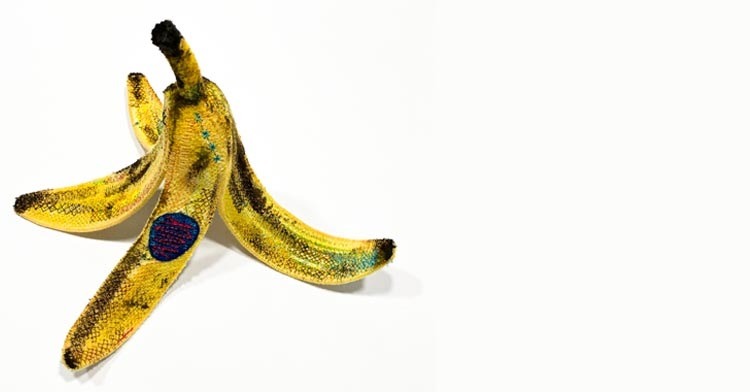
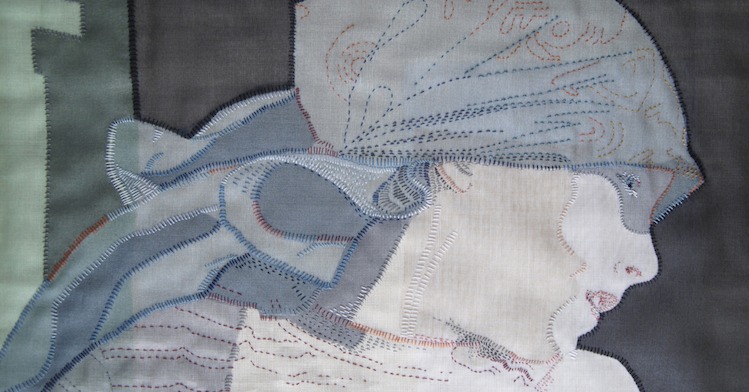
35 comments
Lynne Munro
Brilliant work Gregory! Thank you for sharing your thoughts (very inspiring) and your unique process. I have been tentatively searching working with collage, stitch and watercolour. Perhaps now I can move forward now with new energy.
Gregory T Wilkins
Thank you for your note. I am delighted to hear I have inspired you. I look forward to seeing your work develop.
Jann Glisson
Hello – we ‘met‘ just this week in Stitch Club. A totally new path for me in responding to your Challenge. Many ‘ take aways’ as I read this interview, and a huge number of questions … how did he do that? I’m especially enchanted with your use of photographs combined with stitch and paint, etc. Is the photo printed directly onto canvas, or do you use a transfer process? I will explore your website to see what more I can learn.
Keep up the WOW!
Greg Wilkins
Thank you for your note. I use real photographs that I took and collage them onto the canvas or stitch directly on them by hand and machine.
Pauline Ormerod
As I read that minutes matter and moments count I am truly inspired to do as much as I can at my time of life too. Beginning a new style and learning new technics is such a privilege. Thankyou to all involved in this stitch club from the teaching workshops and the textile artists to the organisation for running it and mostly the enthusiasm of the participants. Such inspiration from every direction.
Gregory T Wilkins
Thank you joining Stitch Club and having fun by doing! It is a delight to learn processes and create an on-line community. Here’s to happy stitching!
Wendy H
What a wonderfully honest interview. Your artwork and outlook on life has inspired me to continue to believe in what I love doing rather than what I think other people will like. Thank you. And I am really looking forward to your workshop next week.
Gregory T Wilkins
Wendy — it is a joy to hear I helped inspire you. Honor your tummy and the rest will be history. I strongly encourage you to be authentic in your creative making, love what you do, cast away the naysayers, and follow your instincts. Doubt may creep in from time to time, though know in your heart it will lead toward great success.
Christine
Omg, I am blown away by your story and your work. The textures you achieve are wild, fun, deep. Everything i would like to express in my work. I am a 69 year old beginner at textile work and so happy to have found this site.I have learned so much in such a short time and hope I have the patience to allow my style to emerge. I am so looking forward to your workshop.
Gregory T Wilkins
Thank you for your note, Christine. It’s never late to pick-up needle and textile work. I too started late in the game, and I am amazed by how quickly I have picked things up. Here’s to your success!
Gregory T Wilkins
Thank you for your note, Christine. It’s never late to pick-up needle and textile work. I too started late in the game, and I am amazed by how quickly I have picked things up. Here’s to your success!
Pauline Ormerod
As I read that minutes matter and moments count I am truly inspired to do as much as I can at my time of life too. Beginning a new style and learning new technics is such a privilege. Thankyou to all involved in this stitch club from the teaching workshops and the textile artists to the organisation for running it and mostly the enthusiasm of the participants. Such inspiration from every direction.
Gregory T Wilkins
Pauline — here’s to creative making and letting inspiration lead your forward.
Hazelnut
Thank you Gregory for being so honest. I too am starting out mid life and trying to work out my “place or style”. I am traditionally trained and yet work in fine gold, silk etc but very much looking forward to seeing and working on the Community group work next week or so, though I am in the midst of building works. it may be later. Your work is amazing and love the outdoor art studio. what inspiration from nature, as well as sense of peace.
Gregory T Wilkins
Thank you, Hazelnut. I am fortunate to have a space outside when the weather is nice as well as an indoor studio. While painting outside has its challenges — mosquitos, mud puddles, falling limbs, etc. — I wouldn’t trade it for anything as the natural light is delightful and creating in natural surrounds is pure delight.
M.E.
Excellent interview! I resonate a lot with what your work, your process, your outlook – we have much in common. I’m American and lived overseas (SE Asia) for many years. That experience had a profound effect on me and ultimately my art work. I wish you continued success with your work and personal fulfillment in everything you do.
Gregory Wilkins
M.E., thank you for taking the time to read about my process. I too LOOOVE travel, especially my time in SE Asia. My volunteerism abroad has a profound impact in my art. May you continue to find the opportunity to see the world and work toward social justice for all people.
Best wishes and continued fulfillment,
Gregory
Jess R
Loved reading this article – Gregory comes across as very thoughtful and clear about his motivations. I also like that I could understand some of his struggle even though I share none of his experiences so far. Love the idea of taping over bits that you like to save for later – might try that!
Gregory Wilkins
Jess, I am glad that my process of creating may inspire you in your own personal way. Takes risks, learn by doing, and know that there are many in the world who will treasure you for doing something new and different.
Best wishes in all that you do,
Gregory
E. S. Senger
Gregory,
Wow! Your very ENERGY is inspiring. Your methods and unique combinations of them are amazing! I applaud you… Your courage to put yourself out there and not give up!
I am inspired to take your art piece titles and do my own thing with them!
Keep producing. The world needs you!
E. S. Senger
Gregory Wilkins
E. S., thank you for your support!
Each day is an opportunity to live authentically and make a difference in the world. While challenges can be fraught with doubt, I value the process of learning and pushing forward toward progress both in my art and my personal life.
And yes, take my titles or other concepts and use them. I hope your own talents may inspire others to help create change.
May our paths one day cross,
Gregory
Joan
Thank you Gregory for your life journey perspective. You have touched several points of intersection within my own life. Be bold, be beautiful, reach beyond are my guiding points for my developing artistic period. Your message in this interview is very special. Thank you!
Gregory Wilkins
Joan — Thank you for taking the time to read my interview. Continue to inspire others around you and know your vision and voice has value. We each make a difference. May you continue to be bold and courageous.
Patricia Taylor
A powerful and inspiring story reflected in the stunning images you have shared
Gregory Wilkins
Patricia — thank you for your kind words. Best wishes in your continued success as an artist.
Gregory
Helena FitzGerald-Cody
What a great article. It has inspired me to move ahead and hopefully gain the confidence that I lack..
Gregory Wilkins
Helena, you can do it! We are our own worst critics. Take small baby steps and before long you will be leaping and flying. I believe in you.
Jessica Grimm
Thank you so much for this very enjoyable interview! Fully embracing who you are is a powerful message for many of us. I especially love the ethnic portraits. There is so much life in them!
Gregory T. Wilkins
Jessica — thank you for your writing. It is my thought that too many people are afraid to love the skin they are in. By loving yourself, you give permission for others to also love you unconditionally. And by being courageous, it opens the door for others to be their authentic self…perfectly imperfect.
Lyn
Enjoyed this article, and his textile art pieces are very good. I like how he says that he can leave a piece of art work for a while and wait for it to speak to him.
Gregory T. Wilkins
Lyn, thank you for taking time to read about my work and process. Sometimes when a piece is not going in a direction that I feel is fulfilling, I tuck it away and forget about it. I work on other pieces that are energizing me. It make be months or even years to return to the piece(s) I was struggling with earlier, When they are rediscovered, I am able to see them with a different lens and able to bring them to closure.
Cathy Wycliff
Very impressed with the work of Gregory Wilkins and appreciated this in-depth interview. His story, his struggles and journey touched me deeply.
Gregory T. Wilkins
Cathy — thank you for your sentiments. Thank you for being part of this community of artists.
Barbara Sage
Thank you for sharing your journey ; it has been inspirational for me as an older newbie longing to just put it out there. I think that I have now found the direction that I needed, and can’t wait to get started
Gregory T. Wilkins
Thank you for taking the time to read about my work. Jump in and enjoy the process. You can do it!